

The Sourp Magar Armenian Monastery – hidden in the Pentadaktylos mountains above Kyrenia for a thousand years. Once a centre of huge cultural significance. Now a crumbling ruin, still visited by Armenian pilgrims every year. It was too enticing to ignore.
‘What do you fancy doing for your birthday?’ Matt asked back in April.
‘I want to find a 1000-year-old Armenian Monastery in the mountains.’
Matt sighed.
And so began my birthday weekend in Kyrenia. We stayed at the excellent Le Chateau Lambousa near Lapta and headed off in search of Sourp Magar on the Saturday morning.
How to find it? My starting place was Google and a few helpful websites. Then I looked it up on Google Maps. Here’s what it showed.
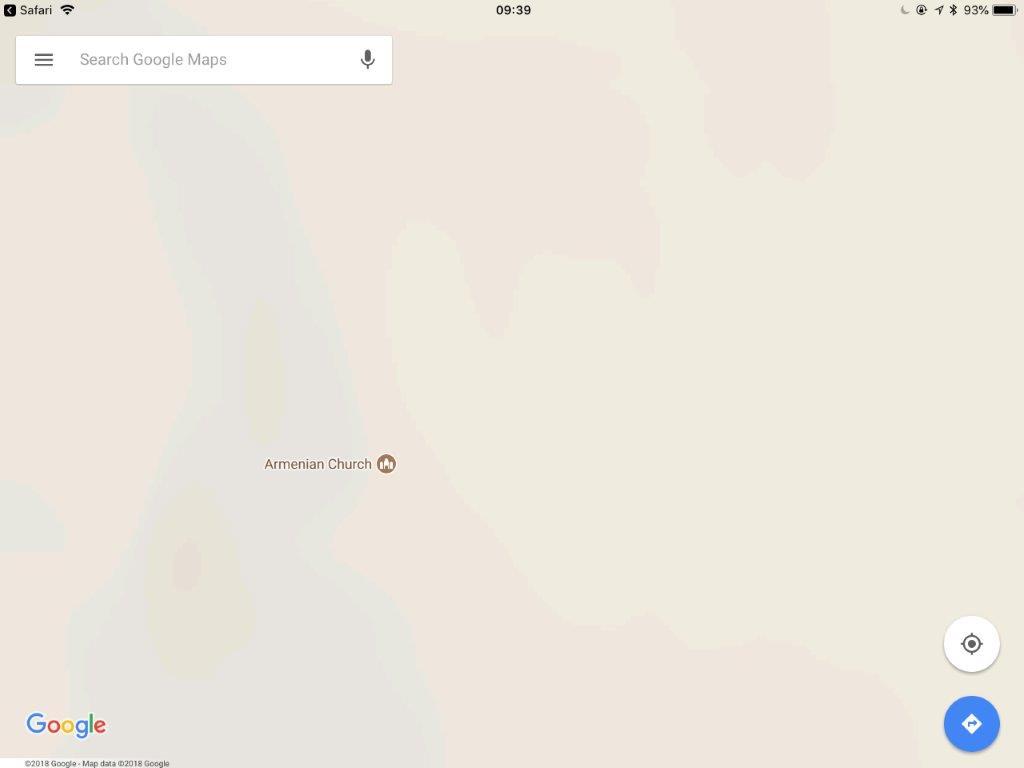
I thought the page hadn’t loaded correctly. Then I realised it had – there were apparently no roads leading to it. Ha ha! This was going to be a fun day out.
Zooming out and switching to satellite view revealed we had a choice of two routes, with roads taking us as near as we could get to Sourp Magar. For both routes, head out of Kyrenia to Çatalköy and follow the main road up to the pass at the top of the mountain. At the Buffavento Restaurant at the top, there’s the track to the right that takes you to the castle and a road on the left that takes you to the Alevkaya Forest Station. If you follow the road on the left for about 6km along the top of the mountain, you reach a picnic site with the sign ‘Ermeni Manastiri’ next to it. Park there and walk the rest of the way.
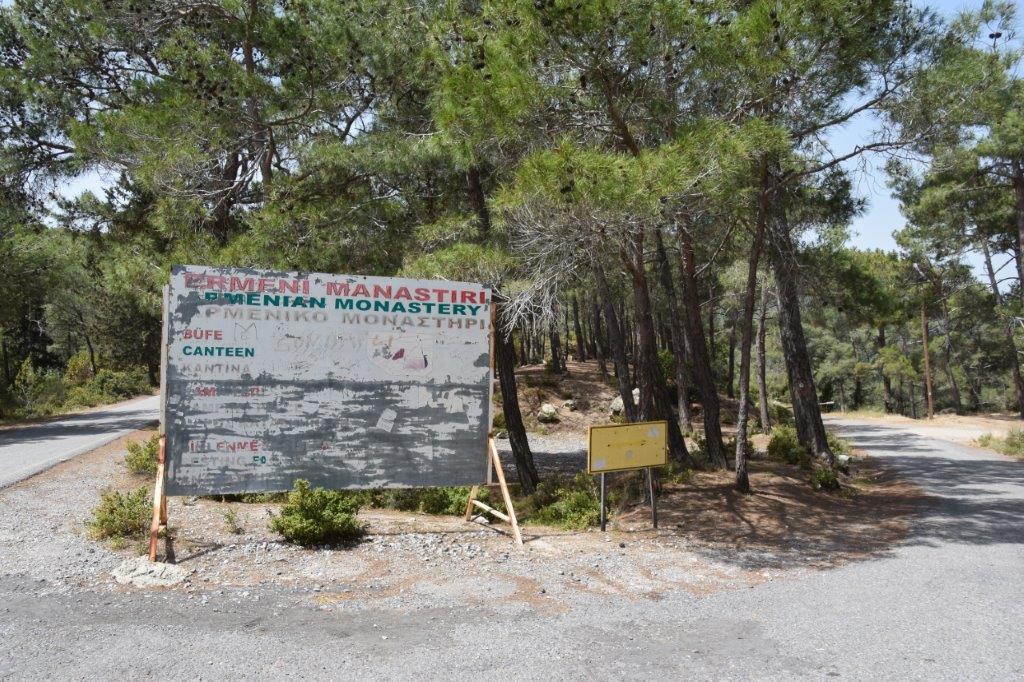
Alternatively, stay on the main road from Çatalköy, going straight on at the Buffavento Restaurant and over the other side of the mountain. If you follow signs to Alevkaya you will reach the picnic site from the opposite direction. We chose this route as the roads looked bigger and less terror-inducing. However, I’d recommend taking the mountain-top route as you are less likely to get lost and it’s quicker. We came back this way and it’s a gorgeous drive with a good road. Not half as scary as I feared.
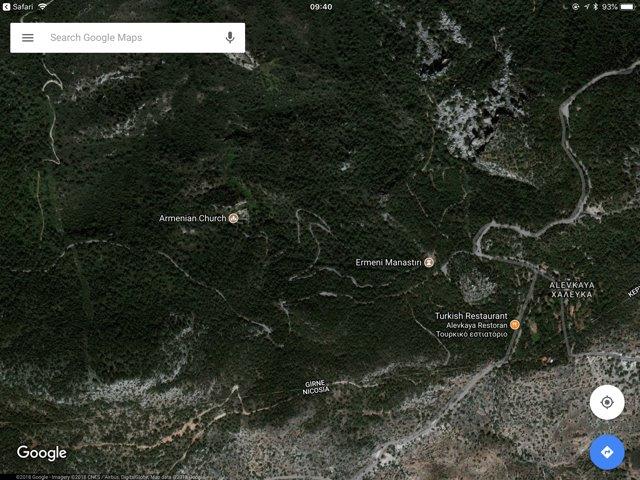
We parked at the picnic site next to the big Ermeni Manastiri sign, had something to eat and continued on foot. Despite Google Maps at first showing a total absence of roads, there was a small road leading from the picnic site downhill. Not the first time Google Maps had got it wrong. The small road was closed, a metal barrier blocking access to cars, but you can easily walk around it on foot.
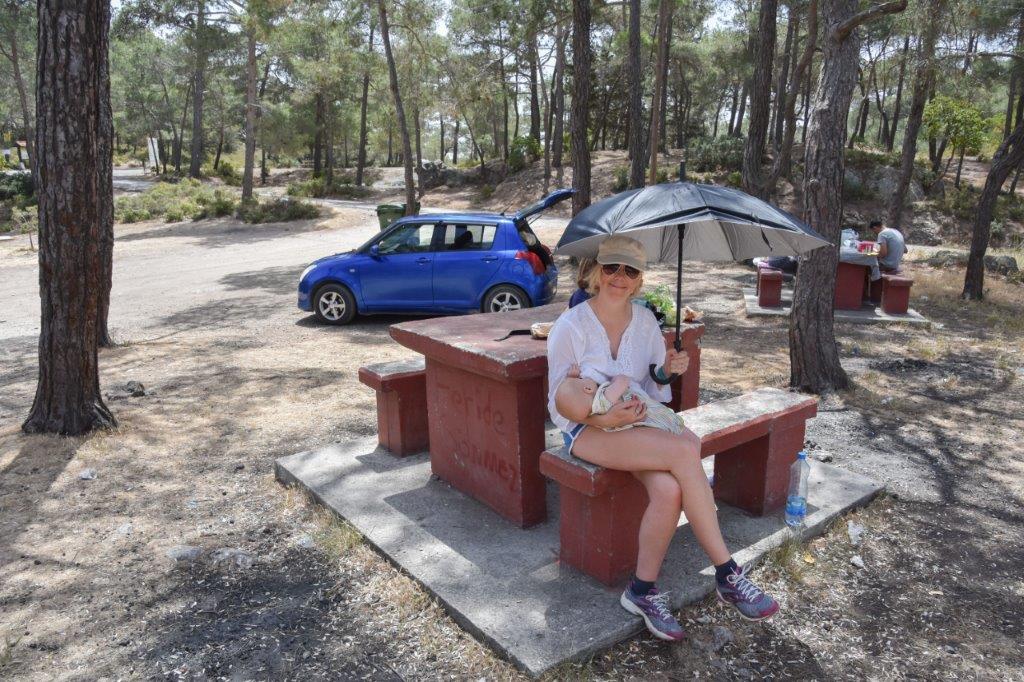
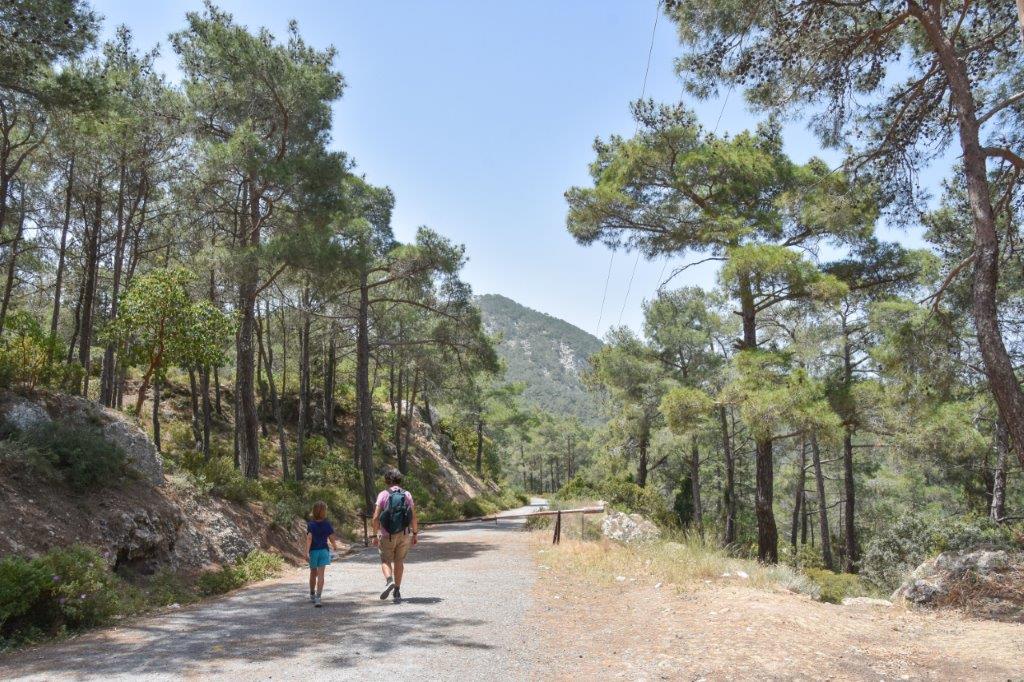
We set off, following the twists and turns of the road downwards. Despite our determination to do this walk in the cool morning, we were, as usual, walking in midday heat. I held a UV-blocking umbrella to protect Herc from the sun, though thankfully mountain air is cooler than on the coast. It was a pretty walk, the road lined with distinctive trees, their red trunks and branches contrasting with the green pines. Goobie ran ahead, spotting blue and yellow butterflies.
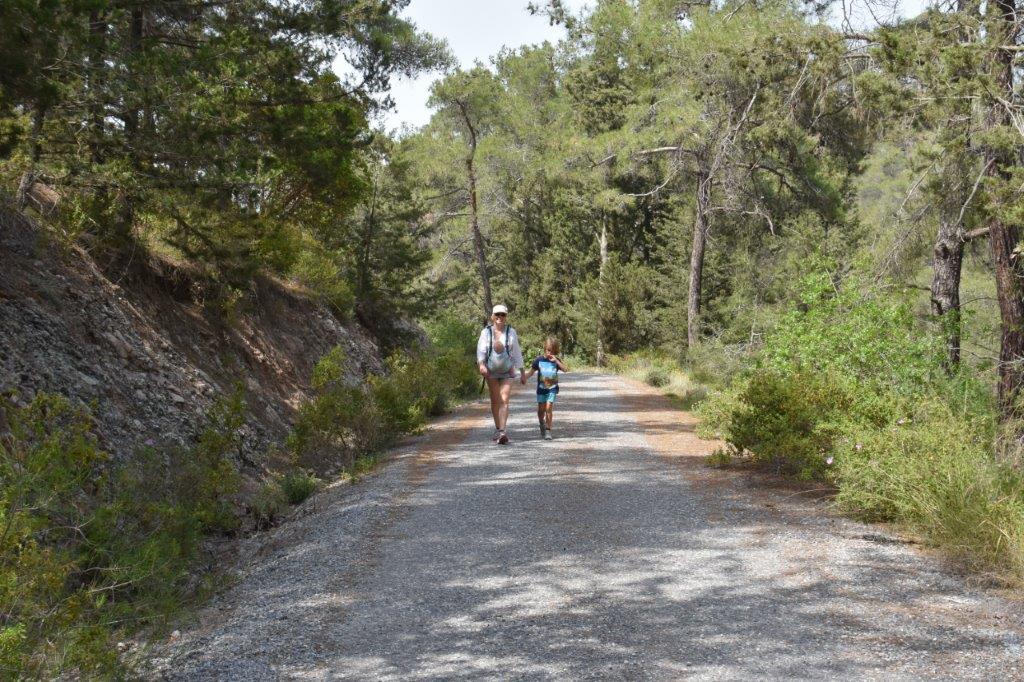
The road switched back around the corner of the mountain and, below us, we caught our first glimpse of Sourp Magar. Crumbling walls and a tiled roof. It was nestled into a fold in the mountain. Excitement was mixed with a small pang of disappointment. Since Sourp Magar isn’t in any tourist brochure and given the tantalising lack of roads on Google Maps, I thought we were in for more of an adventure finding it. It had been a bit too easy.
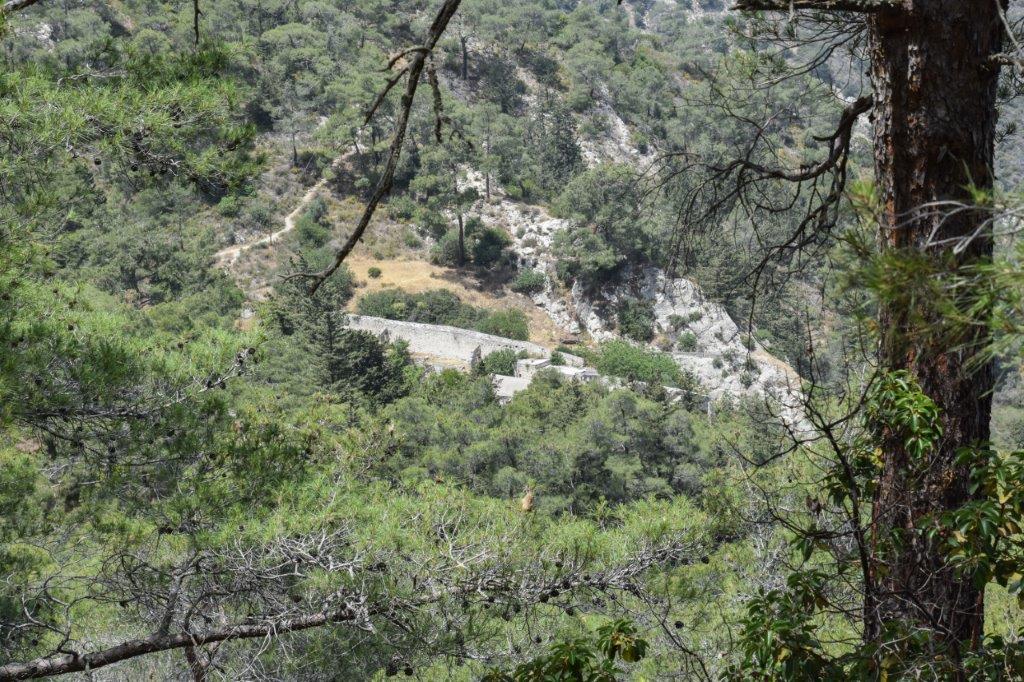
Ten minutes later we walked past the first ruined outbuildings, covered in graffiti and fake Halloween spider webs. Goobie thought the webs were real, enthusing about what kind of tarantula could have made them. I didn’t have the heart to disillusion him.
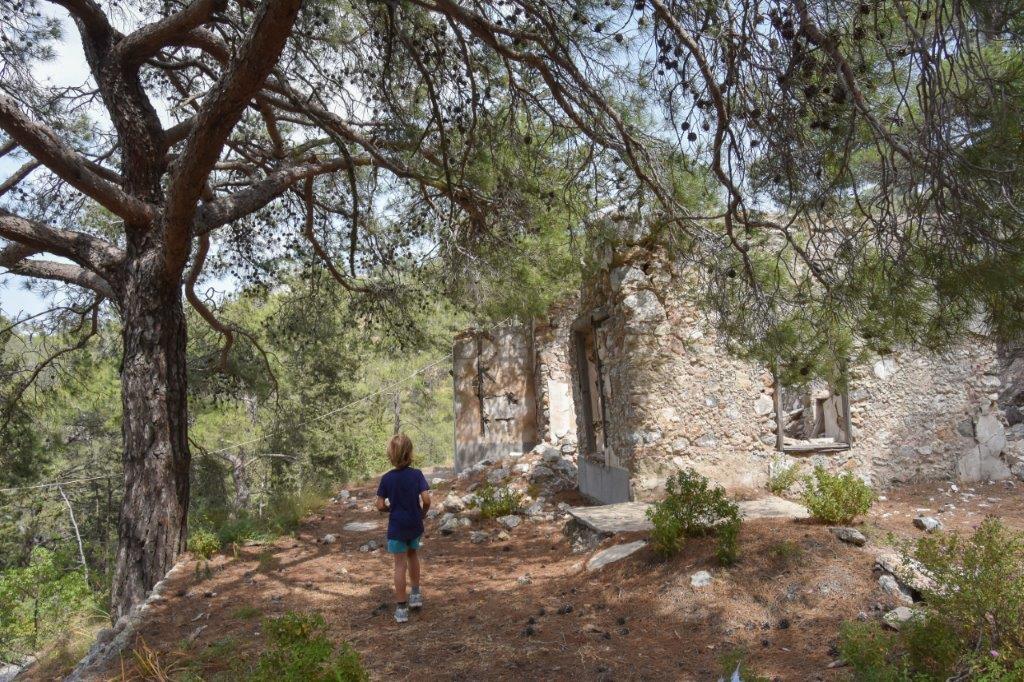
The outbuildings gave us our first clear view of Sourp Magar, sitting as it had done for hundreds of years, enveloped by its ancient outer walls. The sea glinted in the distance 530m below.
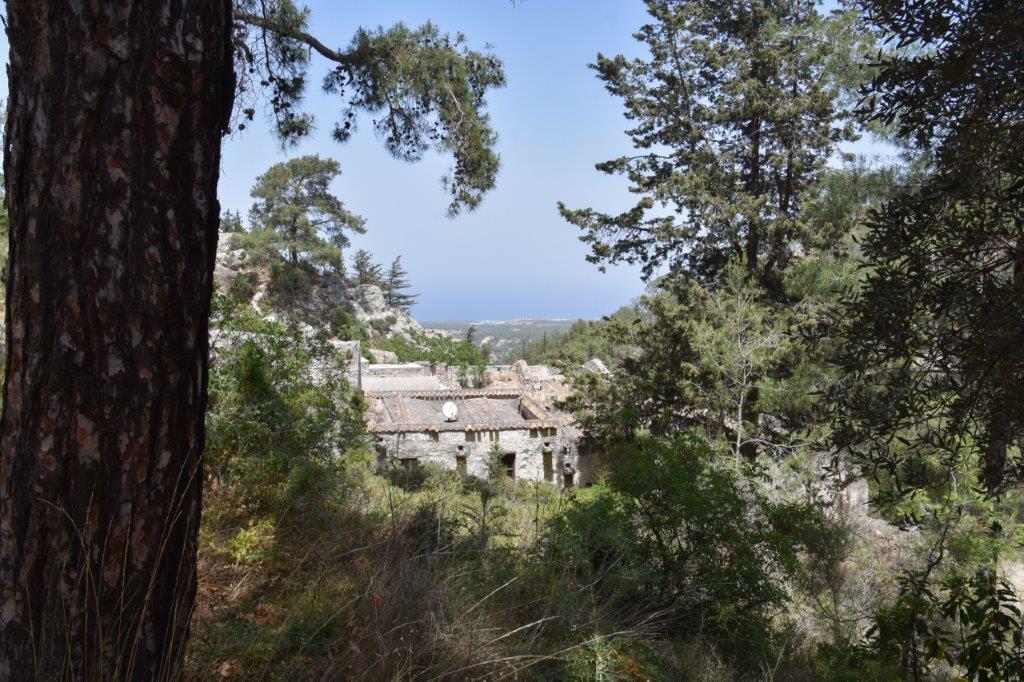
I spotted a footpath leading further up the mountain to a small plateau that gives you an excellent aerial view of the monastery. Sourp Magar has a slightly incongruous feel to it – perhaps its asymmetrical design, perhaps the few restored sections sitting next to sections in a state of collapse.
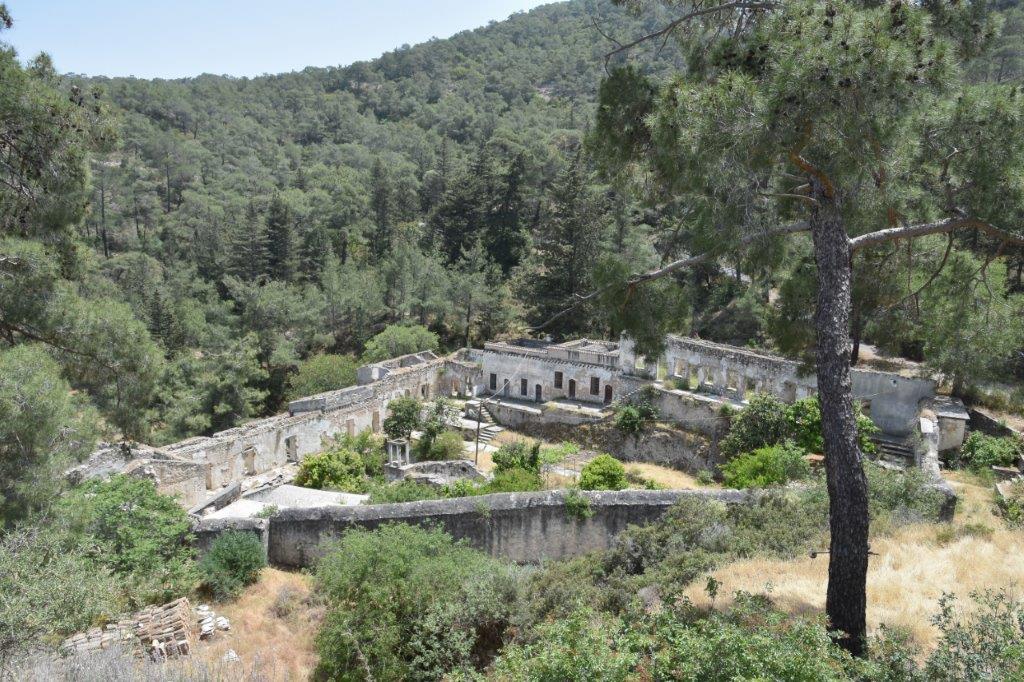
I walked back down the footpath and joined Matt and Goobie who were exploring inside. Walking through the back entrance, the outer walls to the left looked ancient and I could feel its age. Apparently it was built in the 11th century and used by the Coptic Orthodox Church from Egypt. It passed to the Armenians of Cyprus in the 13th century and is also known as Magaravank. It belonged to the Armenians through Lusignan, Venetian and Ottoman rule and was a sacred pilgrimage site.
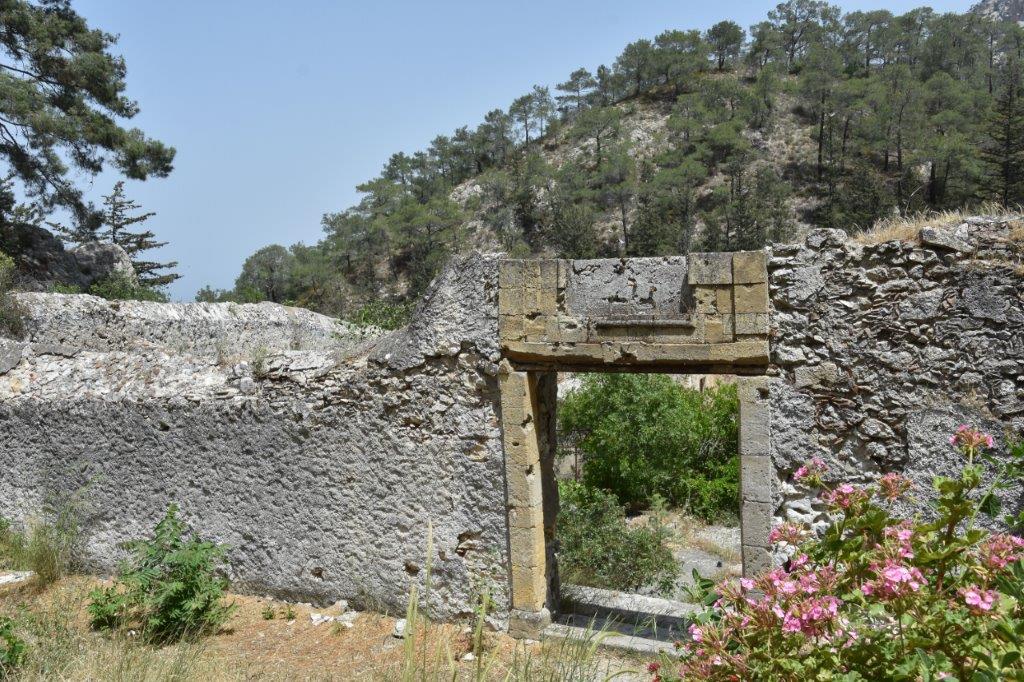
Inside the walls, steps take you down into an overgrown courtyard filled with fruit trees. A trellis with a vine still attached had fallen against one of the buildings. We reached a dried-up fountain. Once upon a time, Sourp Magar had been loved and cared for.
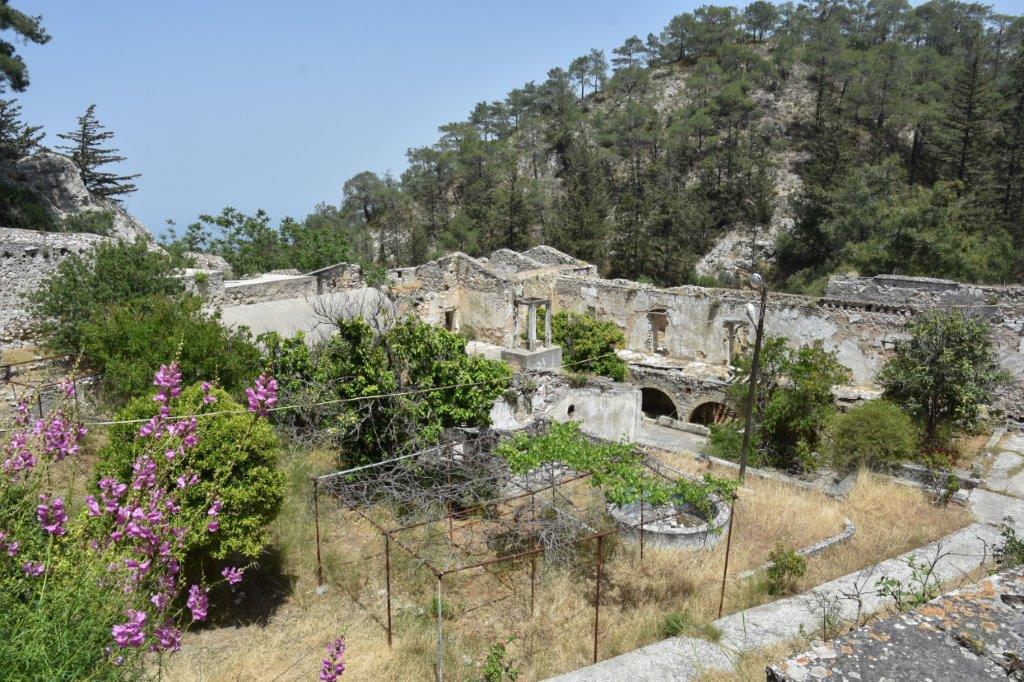
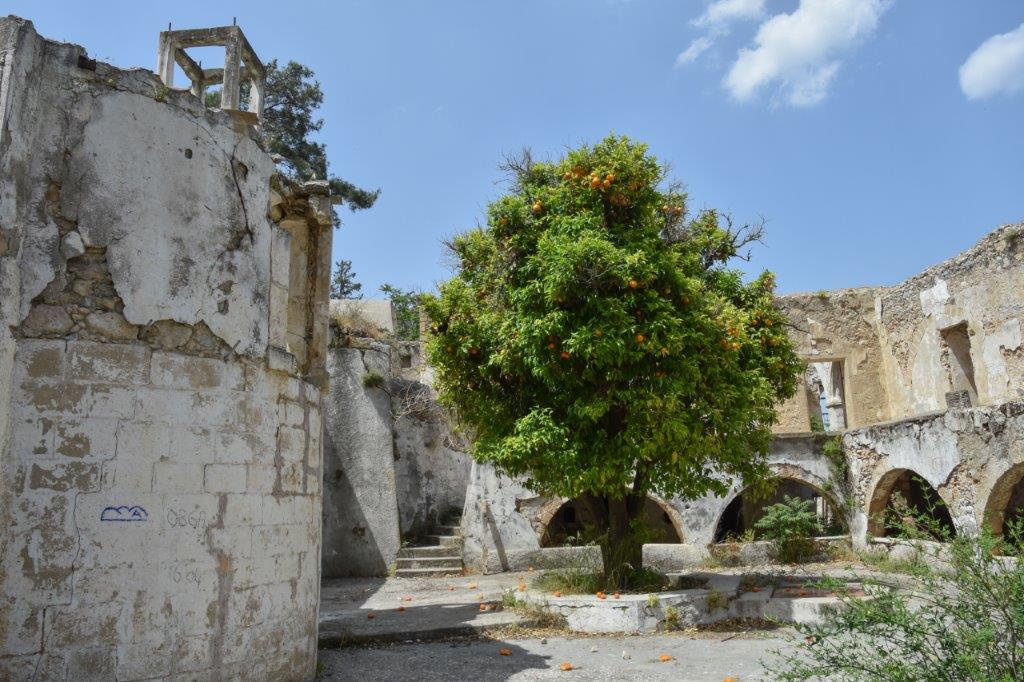
We walked through the courtyard to the two-storey residential area on the opposite side. The wooden beams of the ceilings were, literally, sagging. It looked too unstable to explore inside all of the rooms but we could see paintwork still on some of the walls.
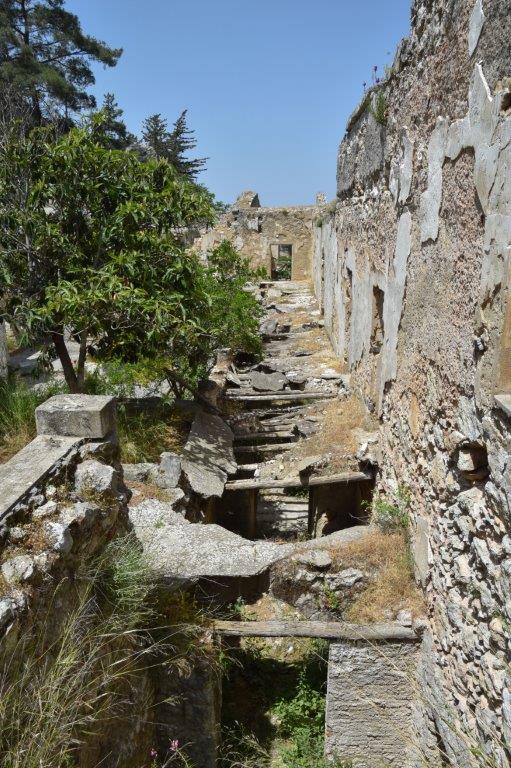
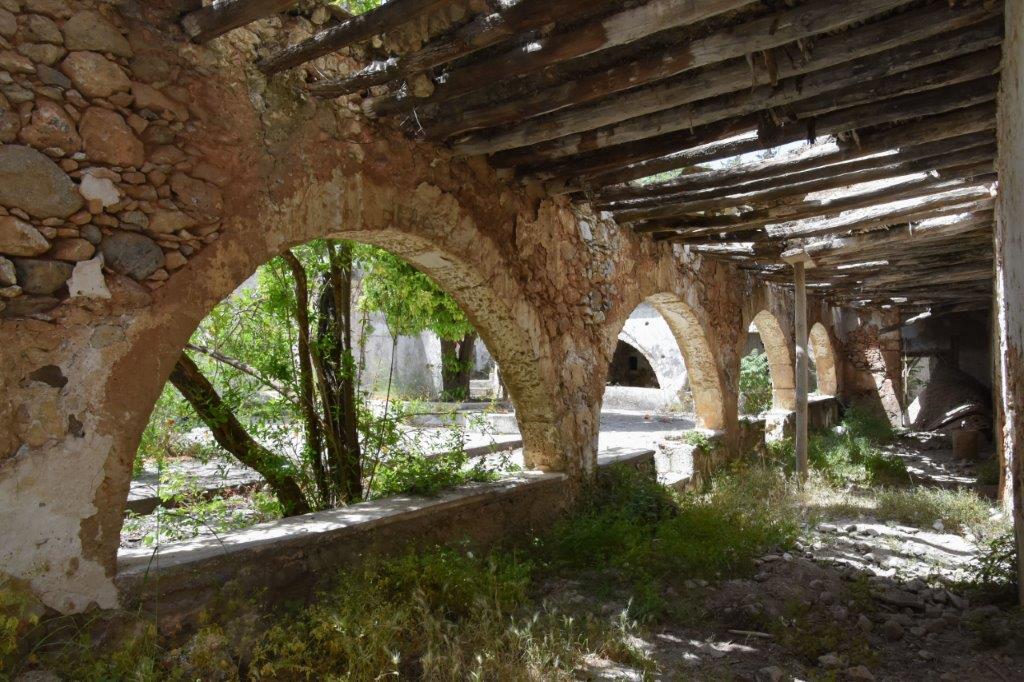
I passed Herc to Matt and legged it under the sagging beams and out through the monastery’s main Gothic entrance to take a look at it from the front. The walls at the front stood proud and tall. Apparently, this section is thought to have been built in the 15th century and is hugely significant architecturally as being one of the best examples of late-Medieval residential building on the island. I wondered, why isn’t this place being preserved?
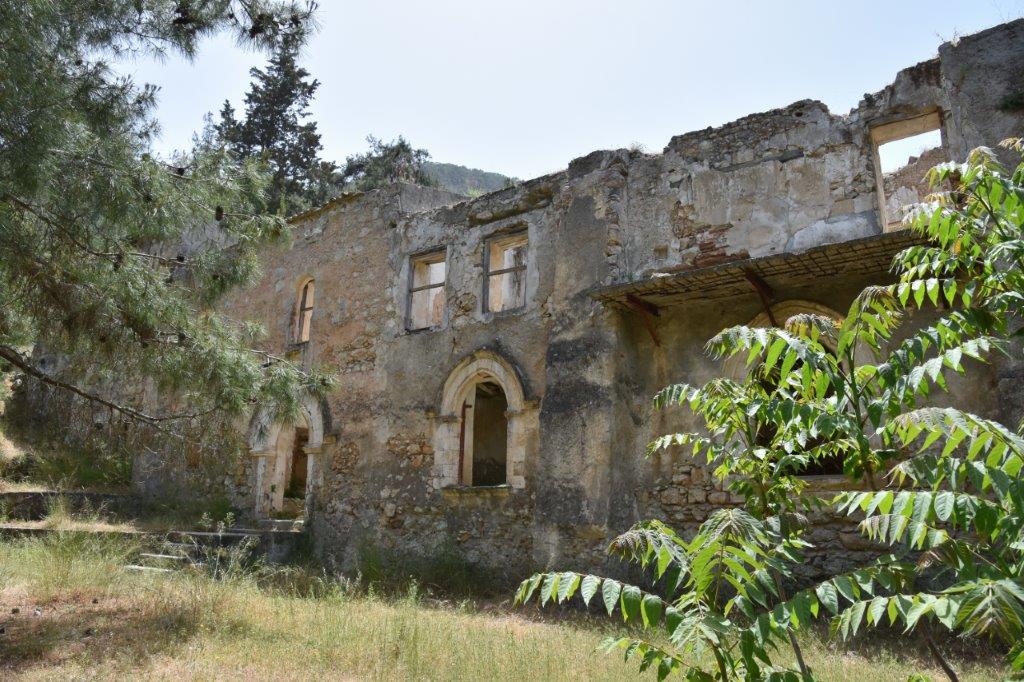
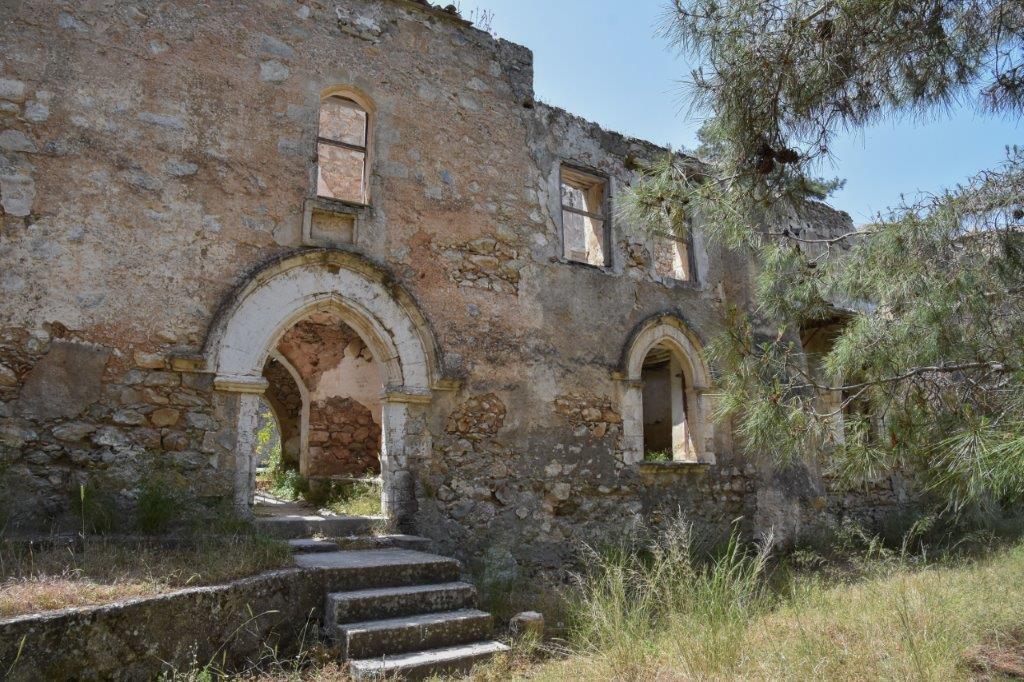
I ran back in through the front entrance to the inner courtyard, bracing myself for something falling on my head. Goobie was up an orange tree next to the remains of two churches.
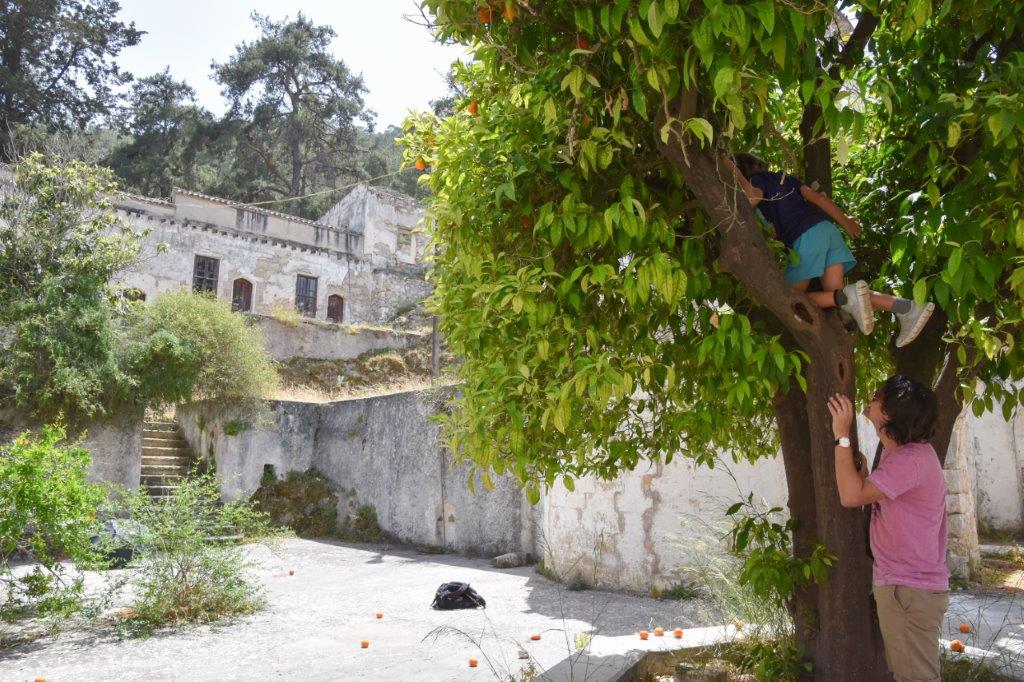
Both churches sit side-by-side with a roofless vestibule in between. I’ve read that perhaps these churches are actually the side aisles of a once far bigger church. I wasn’t struck by that thought at the time but it would make sense. The ornate tiles were still on the floor.
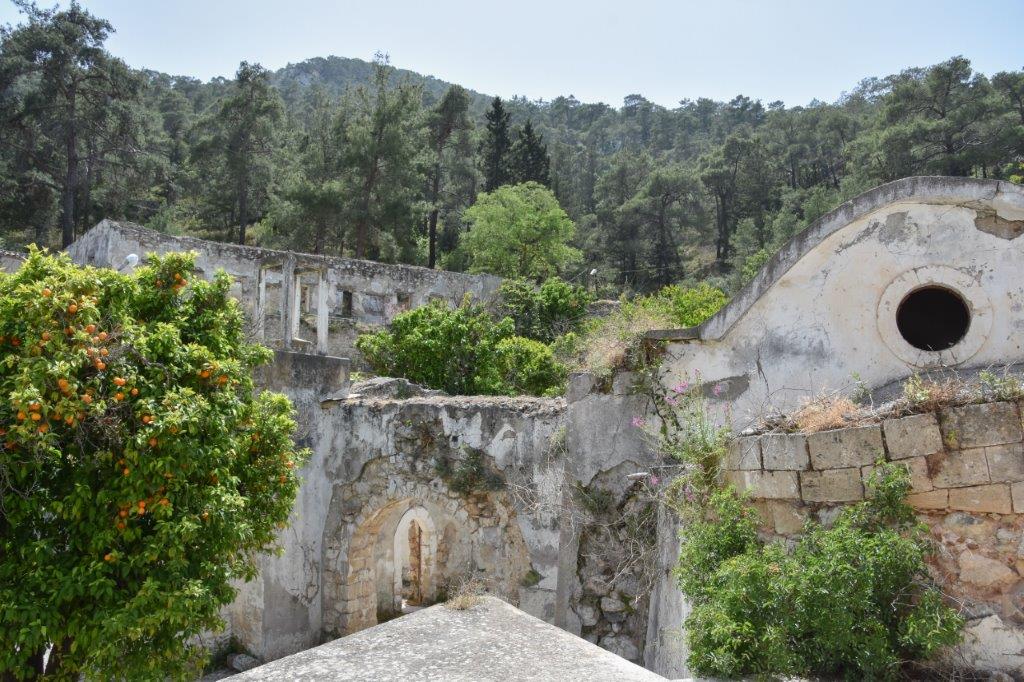
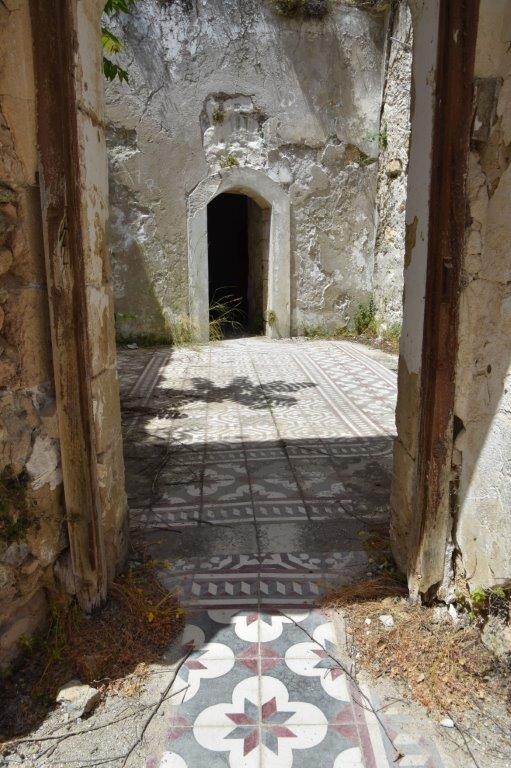
One of the churches is fully intact, with a roof. This church was built up in the 19th century, apparently, but the antiquity of the churches has been compared to the ones we saw in Aphendrika on the Karpaz Peninsula last year.
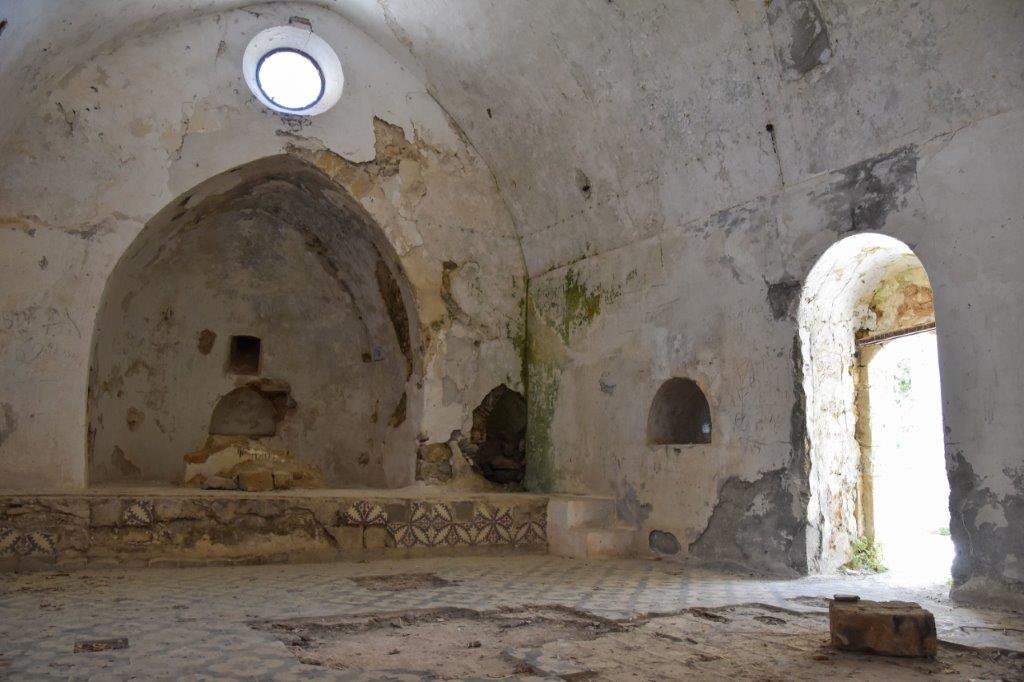
Next to the intact church are a narrow flight of steps to a roofless second storey. More steps continue up around the side of the church’s domed roof. This led to, for me, the most atmospheric part of Sourp Magar – a row of, I assume, monks’ cells down an arched corridor. It reeked of age! It seemed more ancient than any other part of the monastery and of the same age as the outer walls. Is this perhaps what’s left of the original 11th century monastery? I think so.
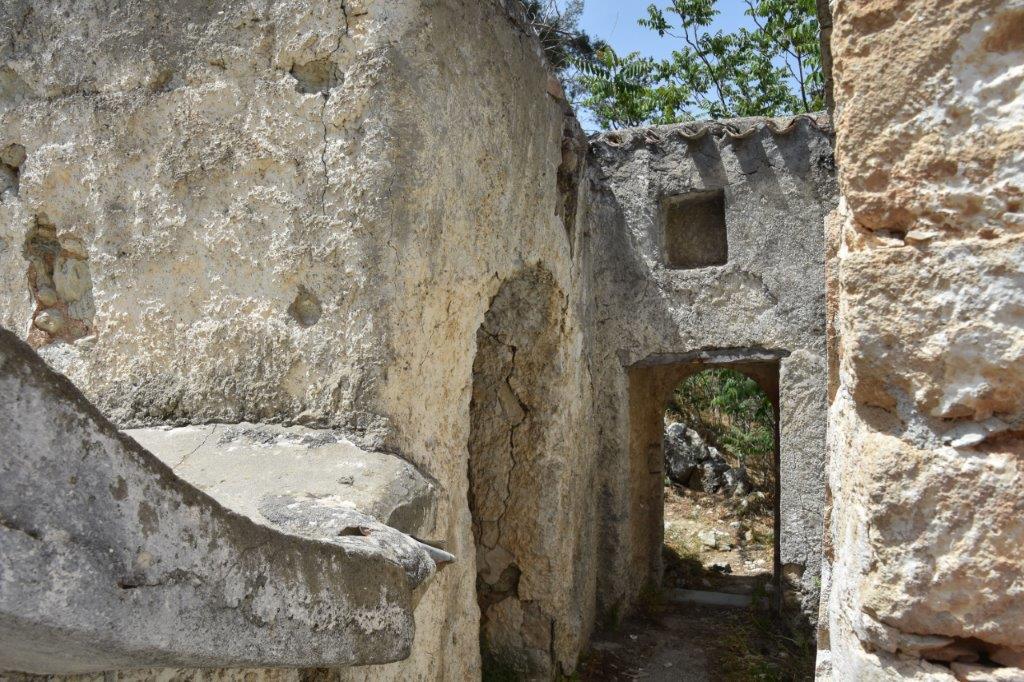
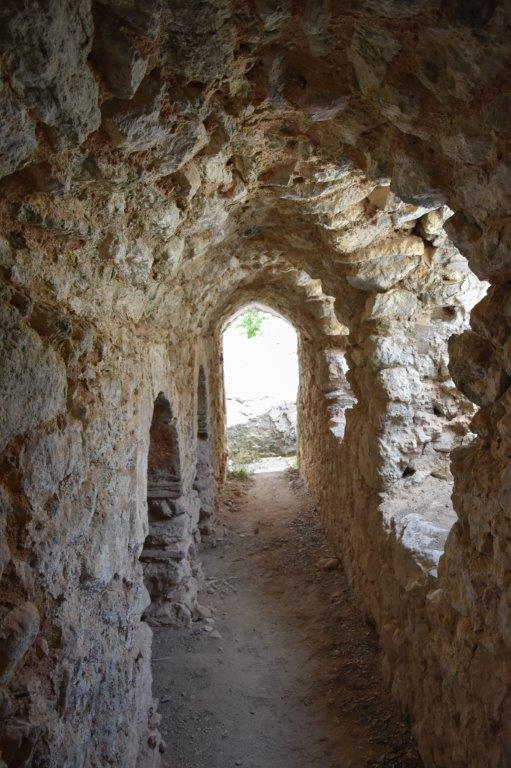
We climbed back down the steps to explore the other side of Sourp Magar – the side containing the few restored rooms. Sourp Magar ceased being a monastery around 1800 and its recent history has been more chequered. It’s been a refuge for Armenians fleeing Ottoman massacres, a school, a summer camp for the scouts. There was even talk of turning it into a hotel. New tiles were added to the roof in the 1920s and various concrete reinforcements installed in the post-war period. I found a great photo of it from the 1920s.

We saw piles of tiles stacked up around the back and weird-looking metal frames. It took me a while to realise they were bunk bed frames, perhaps from its days as a school.
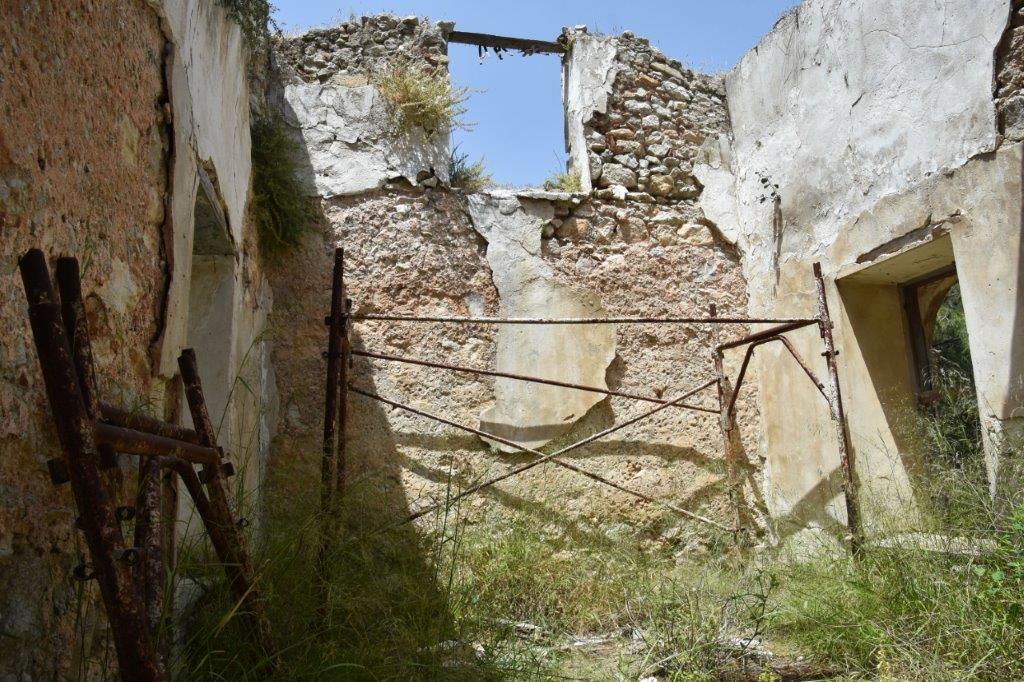
After the Turkish invasion in 1974, Sourp Magar was largely abandoned, but as we walked along the south side we saw a couple of rebuilt rooms with a very basic kitchen inside. Apparently this used to be a kiosk set up for hikers.
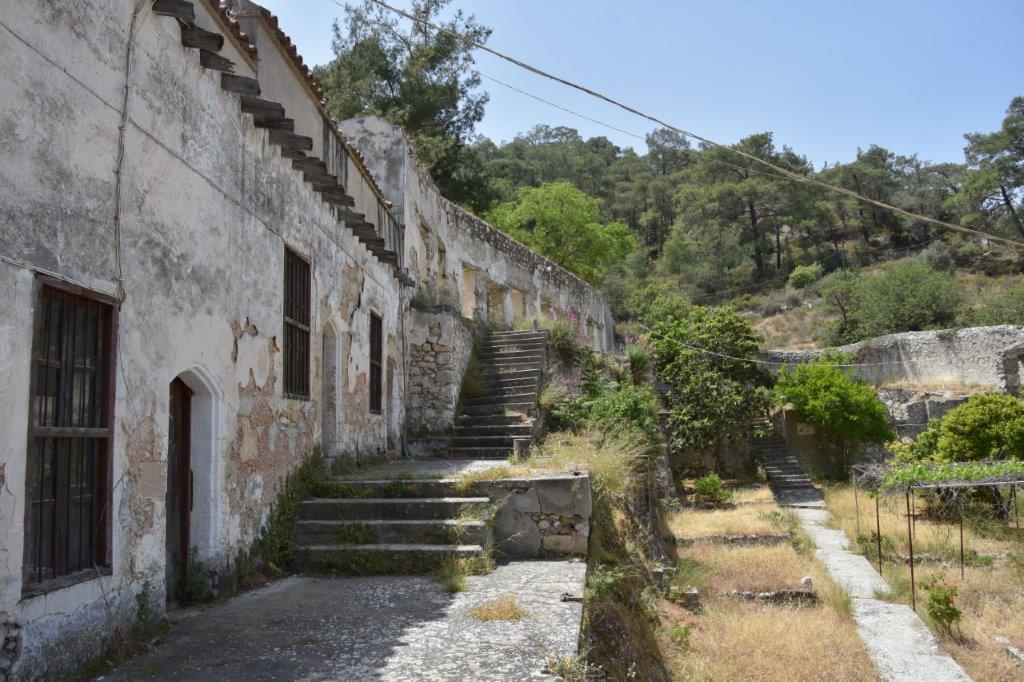
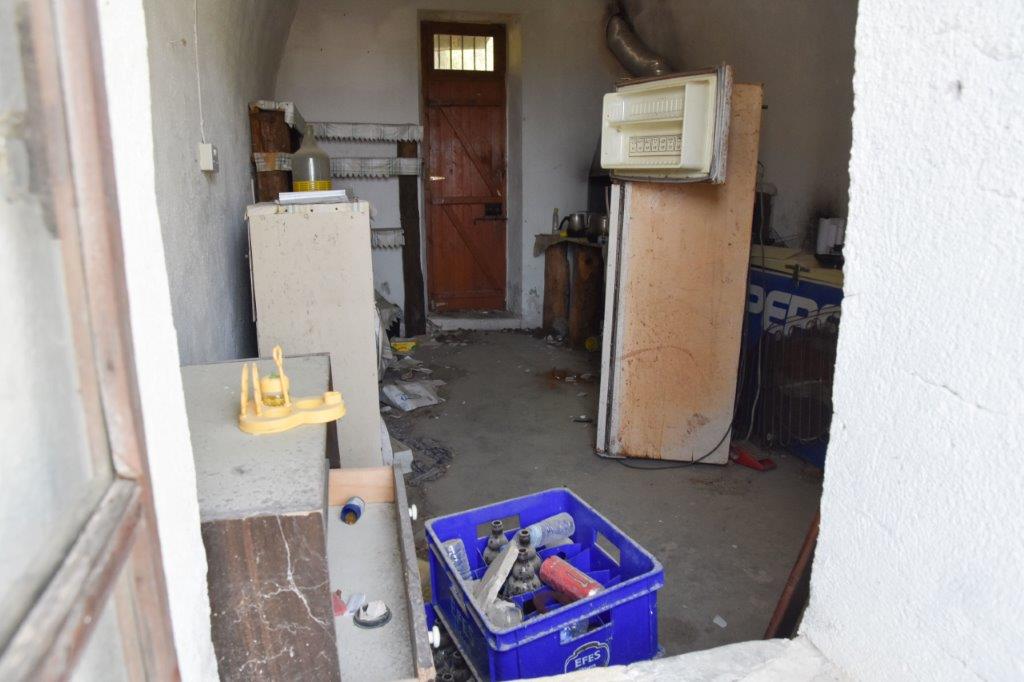
Before beginning the 20-minute walk back up to the car, we sat down on the steps and soaked up the atmosphere of this ancient place, eating the oranges that Goobie had picked. I was struck by the poignancy of how important this place still is to the Armenian community and yet how it has been left to crumble, presumably by the authorities. I’ve read that there isn’t money to restore it. But if it is left to deteriorate, a thousand years of history may be lost forever. And that would be an utter tragedy.
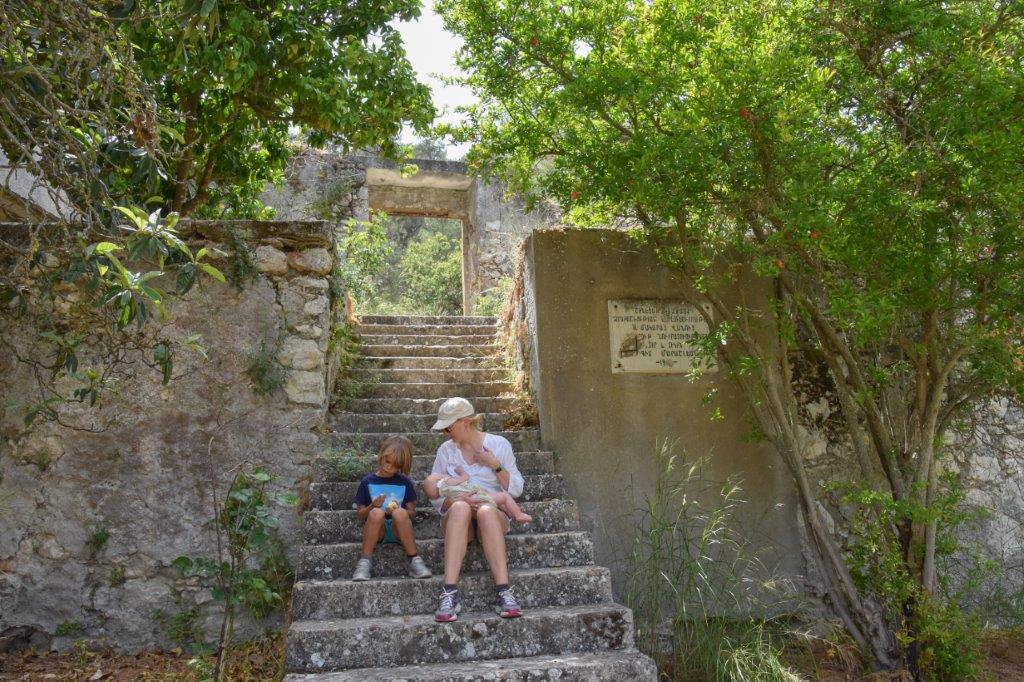
Dear Julia,
Thank you for wonderful description of your recent visit to our historic monastery.
God willing, it will be restored by the UNDP in the next 12 months with funds from various international organisations.
May I share your link to Armenian sites for our community to see and learn about the site as it is today?
Warm regards
Parsegh
2 Comments